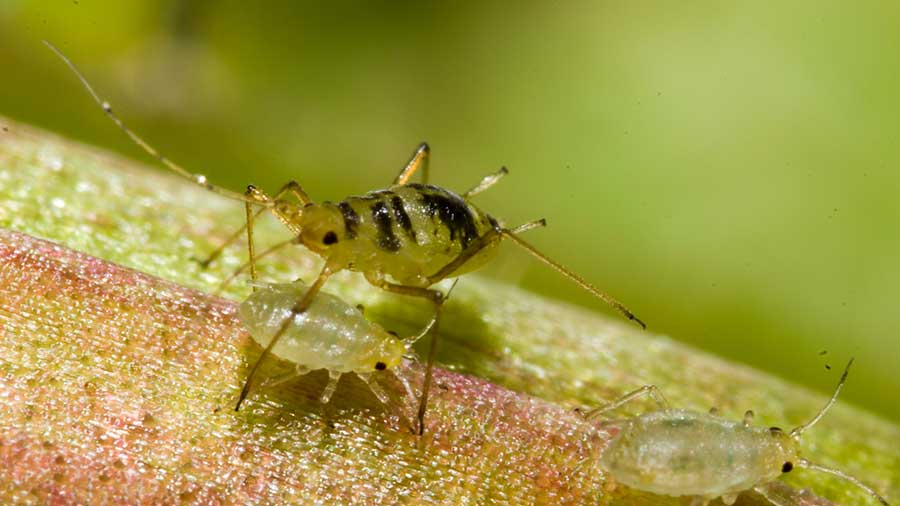One common problem in container gardening, especially vegetable plants, is the presence of various kinds of pests. I usually find these bugs in high numbers after some rain. To get rid of bugs naturally, I use my own, homemade organic pesticide. I will share with you how I make it and how I use it on my plants.
Here is a list of my natural and organic pesticides.
ORGANIC PESTICIDE | PREP TIME |
Oil Spray | 5 minutes |
Garlic Spray | 15 minutes |
Vinegar Spray | 5 minutes |
Chili Garlic Spray | 15 minutes |
Oriental Herbal Nutrients (OHN) | 30 minutes |
Chalk | 1 minute |
Borax | 5 minutes |
Baking Soda | 5 minutes |
Petroleum Jelly | 1 minute |
Mouthwash | 3 minutes |
Beer | 10 minutes |
Crushed eggshells | 5 minutes |
Coffee grounds | 1 minute |
Organic Pesticide for Soft-Bodied Insects such as Aphids, Mites, and Leaf Miners
These insects destroy the plants by sucking plant sap. If not controlled early, they can cause stunted growth and deformed leaves. The presence of leaf miners is easily detected because they make a “roadmap” marking on the leaves, typically yellowish in color.
1. Oil spray
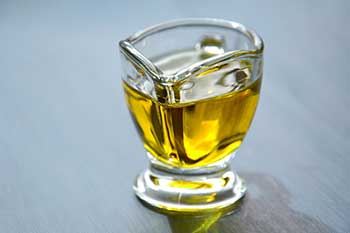
Ingredients
1 cup of vegetable oil. *if not available, you may use any cooking oil
1 tbsp liquid soap
Jar with cover
Procedure
Mix the oil and soap in the jar. Cover the jar and mix thoroughly. To use, dilute 1 tablespoon of the mixture for every liter of water. Mix thoroughly. You can use this immediately. This is effective for soft-bodied insects such as aphids.
The oil spray will coat the body of the soft-bodied insects which will suffocate them. Apply in the early morning or late afternoon. Use once or twice a week.
2. Garlic Repellant Spray
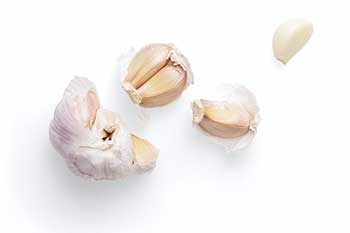
Ingredients
2 bulbs garlic
1 liter water
½ cup vegetable oil *if not available, you may use any cooking oil
1 tablespoon liquid soap
Procedure
Chop the garlic into small pieces. Using a blender, mix the garlic in 1 liter of water. Let the mixture sit overnight. Afterward, remove the solid particles. I use a clean strainer to separate the liquid. Next, add in the vegetable oil and the liquid soap. Mix thoroughly.
To use, dilute the mixture in water. The dilution rate is 500 ml / liter of water. Spray once to twice a week. You can use the mixture for up to a month. Just keep it in a cool, dry area away from direct sunlight. Make sure to cover it tightly.
3. Vinegar Spray
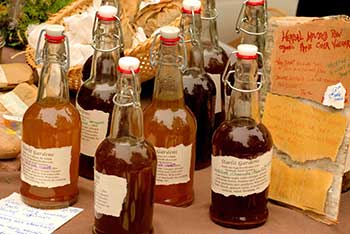
Ingredients
1 tablespoon vinegar
1 tablespoon dishwashing liquid
1 liter water
Procedure
Put one tablespoon of vinegar in a 1 liter bottle of water. Next, add 1 tablespoon of the dishwashing liquid, or about 5 drops. Now, put the cap back on the water bottle and shake it well. After shaking it for about 1 minute, you can now transfer it to a sprayer
Always remember to spray it in the late afternoon. Never spray during noontime or in the morning. You can use this for any kind of plant. Spray once a week only. It may take about 3 applications for the pests to disappear.
Insects don’t like the acidity of the vinegar. At the same time, the vinegar acts as a preservative so the mixture will not spoil easily or produce an awful smell.
4. Chili garlic spray
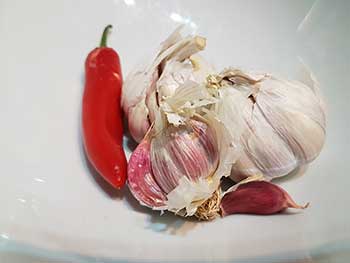
Ingredients
2 bulbs garlic
1 bulb onion
100 grams chili
1 tablespoon liquid dishwashing soap
1 liter water
Procedure
Blend the chili, garlic, and onion in 1 liter of water. Strain the mixture to remove solid particles. Add the liquid soap. Mix thoroughly. There’s no need to dilute this mixture, you can spray this immediately. Use on leafy plants only. Insects tend to avoid the smell of garlic, even the good ones, so don’t apply on flowering plants. Apply once or twice a week.
5. Oriental Herbal Nutrients (OHN)
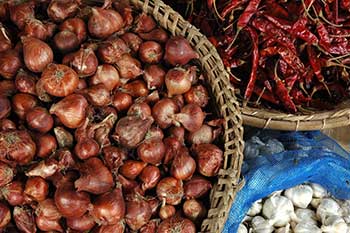
Ingredients
1 bulb garlic
30 grams ginger
1 bulb onion
5 pieces chili
1 tablespoon vegetable oil
Molasses or brown sugar
Procedure
First, finely chop the onion, garlic, chili, and ginger. Squish them all together to release their juices. Transfer to another container. Add in the molasses. If you don’t have one in the kitchen, you can use brown sugar instead. The ratio should be 1:1. For example, if you have 200 grams of the onion, garlic, chili, and garlic mixture, then you also have to add 200 grams of molasses. Mix thoroughly.
Now it's time to put 1 spoonful of vegetable oil. Mix again. Transfer again to a container with a lid. Cover tightly and store in a cool, dry place away from direct sunlight. Let it sit for 1 week. You'll know if you have done it correctly because it actually smells good when you open it. It doesn’t have a pungent or rancid smell to it.
Be sure to always use clean materials in preparing this mixture. You can use this mixture for up to 6 months.
Before using, remove the solid particles by using a strainer. The undissolved ingredients may be placed in a compost for fertilizer, if you have one. To apply, dilute 1 tablespoon of the OHN in 100 ml of water. Spray to all parts of the plant. Use once a week.
Organic Pesticide for Ants
Ants have benefits. They are scavengers, they help decompose organic materials. They also make tunnels which helps in the aeration of the soil. However, the problem starts when these ants start climbing on to your plants. They are notorious for working together with aphids by transporting them to the plant’s leaves, where they suck in all the nutrients. In return, they provide food for the ants through their sugar-rich waste.
6. Chalk
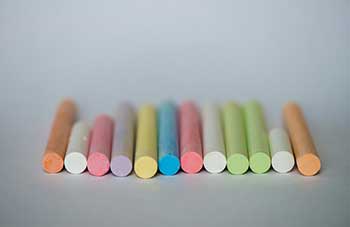
Yes, as in the chalk you use in school. Use ordinary chalk to mark lines around the containers. The chalk has calcium carbonate which irritates the ants. You can also buy one made especially for ants in some grocery stores.
7. Borax
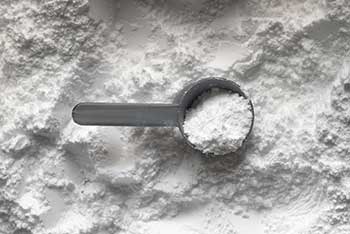
Ingredients
1 tbsp borax and 1 tbsp white sugar.
2 tbsp water
Procedure
Borax is used for cleaning purposes. Mix everything until you produce a paste-like texture. Pour this mixture in the soil, or around your containers. For fast results, look for the ant’s nest and place it there. The sugar attracts the ants while the borax acts like poison. They will bring it to their nest and store it for food. Apply by putting directly in the soil using a spoon.
8. Baking soda
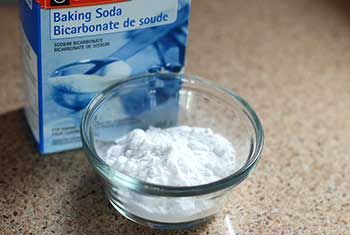
Ingredients
1 tablespoon baking soda
1 tablespoon sugar
2 tablespoon vegetable oil *if not available, you may use any cooking oil
Procedure
If you like baking, then you may have some extra baking soda in your kitchen. Baking soda has sodium bicarbonate which acts as an insecticide. Mix baking soda and sugar. Add oil until it has a paste-like texture. Apply by putting directly in the soil using a spoon.
9. Petroleum Jelly

Ants become a problem if they climb into the plant. To prevent them from climbing, apply petroleum jelly to the base of the plant. It does not dry out in the sun or wash away in the rain. This is a neat hack for petroleum jelly. It’s simple, yet effective. It doesn’t kill the ants but it sure does stop them from climbing it.
10. Mouthwash

Ingredients
1 cap mouthwash
500 ml water
Procedure
The common mouthwash has thymol, which is an active ingredient in pesticide products. To use, just mix the mouthwash with water and apply it as a spray. The effect should be instantaneous.
Organic Pesticide for Snails and Slugs
It really irritates me once I see snails in my container garden. They like to eat the seedlings. They like to eat soft leaves and stems. They could devour an entire leaf in minutes. They are mostly found in moist environments or under rocks and shaded areas.
11. Beer

To make a beer trap, place the beer inside a cylindrical container. Make a small depression in the soil where the container will be placed. The lip of the container should be at ground level. Snails are attracted to the scent of the beer and they will drown inside the beer container.
12. Crushed eggshells
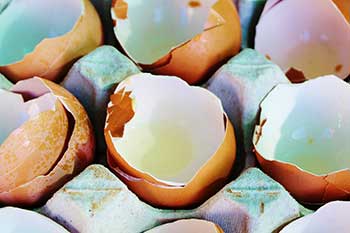
Sprinkle crushed eggshells around the plant. Snails and slugs don’t like the rough texture of the eggshells because it can damage their soft flesh.
13. Coffee grounds
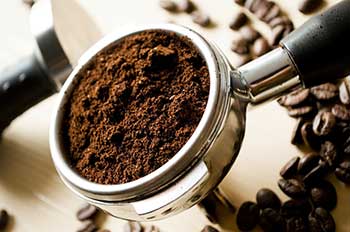
Don’t throw your coffee grounds from the coffee maker. Coffee grounds are an effective way to repel snails that destroy the leaves of the plants. Snails and slugs just don’t like the aroma of coffee grounds. Just sprinkle the grounds on the soil. It is also rich in nitrogen.
You can mix it in your potting soil for your container. If you make compost, you can also mix in the coffee grounds for added nutrients. Nitrogen is responsible for the overall growth of the plant and healthy leaves. Good for parsley, chili, tomatoes, and leafy greens.


